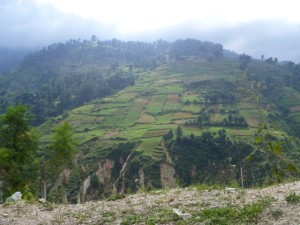
To achieve this lofty goal, we first have to “test” how Nicaragua’s Guadua bamboo will do in Haiti, and more specifically WHERE they will grow best.To this end, we identified three distinct micro-systems, in three distinct regions of Haiti, and today was about delivering both bamboo seeds and bamboo saplings that we brought from Nicaragua in the hope that some of them will “take”.
We start with a delivery of seeds to Kevin Rowell, a bambusiast and natural builder expert who has built bamboo houses in many places, in particular in Costa Rica where we have a common friend, Costa Rican bamboo architect and builder Martin Coto.
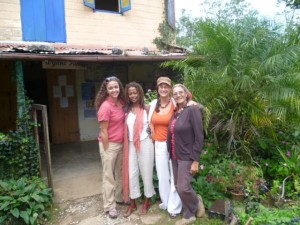
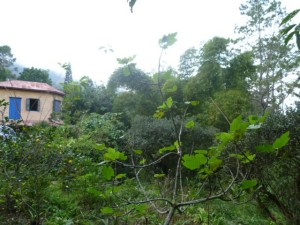
The second, and the horse I (Ben) am betting on, is Jenny Winne. Jenny has a `renowned “green thumb” and is the owner of Winne Farms, a large pedagogical farm in Kenscoff, an area of Port of Prince that sits way, way high in the surrounding mountains. Her father was an American who came to Haiti in 1926 and married a Haitian woman. He was a visionary who studied Peruvian agricultural techniques and sought to apply them to mountainous Haiti.
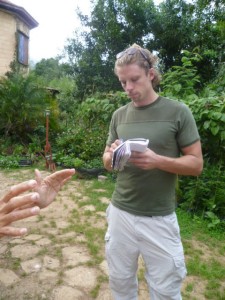
For several decades, Winne Farm has produced many different types of crops, fruits, trees.
These days, it is something of a “Noah’s Ark” for rare fruit trees and exotic plants and hordes of agricultural students come and visit for workshops to learn about irrigation and planting. Jenny for instance received 1000 Guadua bamboo plants years ago from a US funded group that had these moribund plants and they had asked for her help. She “nursed them back” to life and gave them back healthy plants. She kept a couple of plants, which are still thriving today in her garden. Jenny had expressed interest in being part of CO2 Bambu’s Guadua reforestation initiative in Haiti, so today is delivery day. I have full confidence that if these Nicaraguan babies grow anywhere, they will grow here… Blake accompanies us to round out his story on bamboo that he is writing.
We drive up the hills out of the city of Port au Prince into the surrounding mountains and the air is palpably cleaner with each mile that we climb. Jenny gives us a tour of her beautifu garden and compost heaps and we sample some yummy kaki “persimons” and get some fresh kale for dinner later. Her house looks and feels like an Italian villa with the surrounding pine trees and fruit trees. It is really nice to get a break from the city noise, dust and traffic. Being at Jenny’s place is totally rejuvenating.
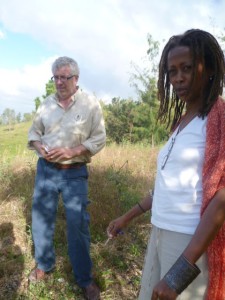
Before we get back to the city, Regine takes us to her favorite spot, which is a hill top view overlooking the whole of Port au Prince and ocean.
Third is CO2 Bambu good friend Gilbert Viala. A charming, multi lingual Haitian bamboo expert, Gilbert has accompanied CO2 Bambu every step of the way from the first day I landed in Haiti after the earthquake. Out of a first crop of seeds I had brought, only one seed germinated, so this time, we took great care to weed out the unhealthy seeds and of course we brought plantulas to kickstart the effort and get ourselves ready for a first planting as soon as feasible.
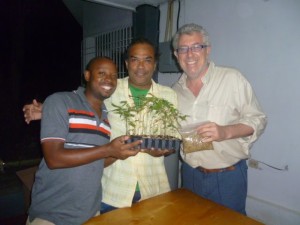
The trip to Petit Goave is a bit long and it feels as though we have been in the car all day, but … it is good that Peta and Gilbert have met. We share a future together and since Peta touches just about every aspect of CO2 Bambu’s business, it was important that she be connected to CO2 Bambu’s Haiti “family”.
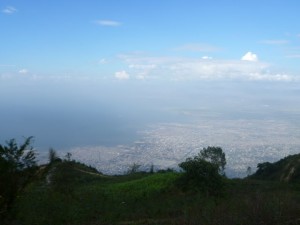
Thank you Peta and Ben. You definitely make the world a better place
Thank you Lisa. We certainly did our best to try to bring low cost bamboo housing to the people of Haiti. We built two houses with local teams which we hired and trained, but were ultimately unsuccessful, primarily because of the colossal challenges with international NGOS. The rebuilding of Haiti has been a total fiasco for everyone involved and to this date, large segments of the population, sadly remain impacted still eight years after the earthquake.
Peta & Ben
This is so great, Peta. What a wonderful initiative. I really admire you both.